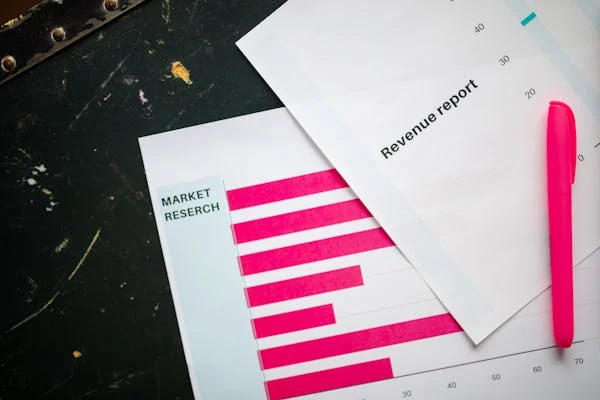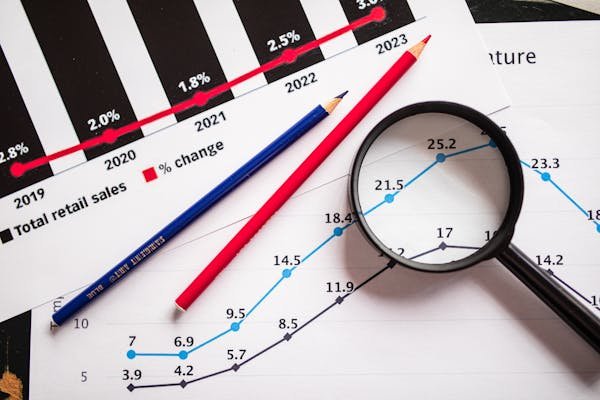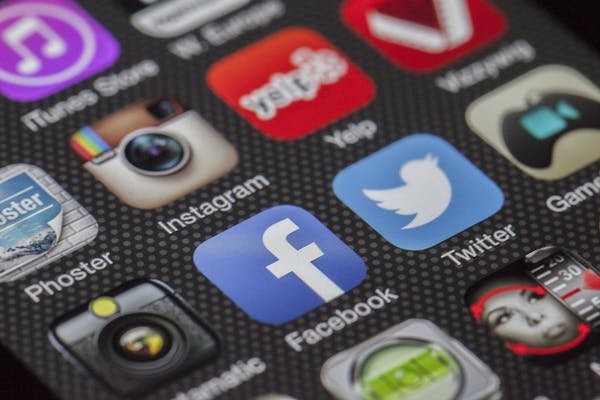In the world of subscription businesses, growth doesn’t always come from new customers. A huge portion of revenue actually comes from the customers you already have. And one of the most powerful ways to increase this revenue is through upsells and add-ons. These are the small but valuable extras that people pay for on top of their regular subscriptions.
1. 26% of total subscription revenue in SaaS companies comes from add-ons and upsells
Why This Matters
More than a quarter of revenue coming from upsells and add-ons is not something to ignore. If your business is only focused on acquiring new users and not thinking about expansion revenue, you’re leaving money on the table.
The Practical Angle
This stat shows that growth doesn’t always need to come from more customers. It can come from current users spending more. Many SaaS businesses hit a ceiling in user growth. That’s when expansion becomes the next best path.
Here’s where add-ons shine. They’re flexible. You can package features, charge for usage, or offer convenience — all as a layer on top of the main product.
How You Can Apply This
Start by identifying features that could be pulled out into standalone value. Is there something in your tool that only power users touch? Could that be an add-on?
Think about:
- Advanced analytics
- API access
- Premium customer support
- Extra storage or usage
Bundle them as optional extras. Price them clearly. Let customers upgrade easily — ideally from within the product itself.
Also, monitor user behavior. If someone keeps hitting usage caps, that’s a signal for an upsell. If a user logs in daily, they’re likely to pay more for better functionality.
Run experiments. Test different pricing for add-ons. A/B test packaging. Small changes can create big revenue lifts.
Upselling doesn’t need to feel pushy. Done right, it feels like offering value.
Let’s keep going.
2. Companies with strong upsell strategies report 32% higher revenue growth year-over-year
Why Upsell Strategy Drives Results
When companies build a clear system for upsells, they stop relying only on luck or customer discovery. They guide users down a path. That’s what makes the difference between passive and proactive monetization.
Behind the Growth
Strong upsell strategy is not just about having add-ons. It’s about timing, delivery, and relevance. The best SaaS companies plan how and when they’ll ask users to upgrade — and they do it in a way that feels natural.
They don’t wait for the customer to ask. They use in-product nudges. They track usage patterns. They know when a user hits a pain point and suggest the perfect solution.
That’s how growth gets unlocked.
How to Create a Strong Upsell Strategy
- Map your customer journey. Find the moments where users are most likely to see value in paying more.
- Use data to personalize offers. Look at usage, seat count, login frequency — tailor offers based on behavior.
- Automate upsell triggers. In-app modals, upgrade banners, and personalized emails — all can drive conversions.
- Train your support and success teams to identify and act on upsell signals.
Upsells should never feel like a sales pitch. They should feel like a natural next step.
If your revenue isn’t growing as fast as you’d like, look at your upsell plan. It might be the missing piece.
3. Upsells account for 30%–40% of total ARR in high-growth SaaS companies
The Big Picture
Annual Recurring Revenue (ARR) is the heart of every SaaS business. For high-growth companies, nearly half of that ARR comes from upselling.
That’s not a coincidence. It’s a playbook.
High-growth businesses don’t just grow because they get more users. They grow because they get more value from each user.
How They Do It
These companies don’t treat all customers the same. They segment their base. They know who’s most likely to upgrade. And they know what those users need to pay more for.
They also layer in value gradually. Start small, expand over time. Instead of selling everything upfront, they unlock higher tiers, more capabilities, and new products as customers mature.
That’s how ARR compounds.
How You Can Get to 30–40% of ARR from Upsells
Start with segmentation. Not all users want more. But some do. Find them. Build specific offers for them.
Then, make it easy to say yes.
In-app upgrades. One-click purchases. Transparent pricing.
Track upgrade trends. If you notice certain types of users upgrading more often, lean into that. Create tailored journeys for those segments.
Also, don’t stop at one upsell. Layer in more. Introduce new value over time.
Think of upsells as a journey, not a one-time event.
4. Expansion revenue (upsells, cross-sells, add-ons) contributes over 70% of net new revenue for mature SaaS businesses
The Maturity Curve
As SaaS companies mature, the way they grow shifts. In the early days, growth is mostly from new signups. But over time, that slows. Markets saturate. Acquisition costs go up.
That’s when expansion becomes the main engine.
For mature SaaS companies, most new revenue doesn’t come from new users — it comes from existing ones spending more.
Why Expansion Revenue Becomes Central
There are several reasons:
- Existing users are already convinced of your value.
- You don’t have to spend heavily on sales or marketing to reach them.
- They trust your brand, know your product, and are more willing to pay for more.
Expansion is the most cost-effective way to grow.
Plus, it’s predictable. With good usage data and segmentation, you can forecast upsells more accurately than new sales.
How to Maximize Expansion Revenue
Start by building a product that grows with your customer. That means:
- Tiered features that unlock with usage
- Add-ons that solve bigger problems as teams scale
- Higher levels of service or support as companies become more dependent
Then, create upsell paths based on lifecycle stage. New users get starter add-ons. Long-time users get premium bundles. High-usage customers get advanced tools.
Also, revisit pricing every 6–12 months. As your product matures, you’ll find new things people are willing to pay for.
Invest in account management. The more you know your customers, the better you can serve them — and the more likely they are to buy more.
Think of expansion as farming, not hunting. It’s a long game, but the returns compound.
5. 52% of B2B SaaS companies say over 25% of their revenue is from add-ons
The Landscape
More than half of B2B SaaS companies are already getting a significant portion of their revenue from add-ons. This shows that upsells aren’t just a bonus — they’re a major revenue stream.
That 25%+ figure is a sign that add-ons are working, not just existing.
Why Add-Ons Work in B2B
In B2B, companies grow in size and needs. What a 5-person startup needs is different from what a 500-person company wants. Add-ons let you serve both — without forcing either to pay for things they don’t need.
It’s flexibility without complexity.
Also, in B2B, budgets often have room for value. If an add-on helps a team save time or drive outcomes, that budget opens up.
Add-ons give you the toolset to align pricing with value delivered.
How to Build Add-Ons That Drive Revenue
Talk to your customers. Ask what they’d pay extra for. You might discover pain points your core product doesn’t solve.
Build add-ons around:
- Security and compliance
- Workflow automation
- Integrations with other tools
- Admin features and controls
Once you have them, price them clearly. Show ROI. Use case studies. Help customers understand what they’re getting.
And most importantly — make upgrades frictionless. If someone wants an add-on, they should be able to get it in minutes, not through a sales call.
Let the product sell itself, but support it with clear, value-first messaging.
6. 29% of SaaS revenue growth comes from existing customers through upselling
The Power of What You Already Have
Customer acquisition is expensive. It takes time. It takes marketing. It’s unpredictable.
But your current customers? They already trust you. They’ve already bought in. And many of them are open to spending more — if they see value.
Nearly a third of revenue growth in SaaS comes from simply helping current users move up the value ladder.
What This Looks Like in Practice
A user signs up for your basic plan. They use it for a few months. Their team grows. Their needs grow. And instead of switching to another tool, they upgrade within your product.
That’s upselling.
It’s low-friction, high-margin growth.
How You Can Drive More Upsell Growth
- Watch behavior. Who’s logging in most often? Who’s hitting limits? These are upgrade-ready.
- Build in upgrade nudges. “Need more users?” “Hit your storage cap?” — show the upsell right at that moment.
- Time it right. Don’t offer upsells too early. Wait until someone has seen success with the product.
- Keep your upgrade paths simple. Confusion kills conversion. Make the pricing and benefits crystal clear.
- Make it easy to say yes. In-product upgrades, credit card capture — one-click upsells go a long way.
The takeaway: growth doesn’t always mean finding new customers. Sometimes, it’s about growing with the ones you already have.
7. Top quartile SaaS companies derive 44% of subscription revenue from upsells
What Sets Top Performers Apart
This stat gives us a clear benchmark. The best-performing SaaS companies — the top 25% — make nearly half of their revenue from upsells.
That’s not a fluke. It’s a strategy.
These companies don’t rely on growth hacks or one-time boosts. They build products and pricing models that naturally lead customers to spend more over time.
The Mindset Shift
Instead of thinking of upsells as “extra,” these companies treat them as core to their business model. Every customer interaction is an opportunity to deliver more value — and earn more revenue.
They don’t just hope users will upgrade. They design for it.
Upselling is part of their product design, onboarding experience, pricing strategy, and support process.
How to Get to That 44%
To follow this playbook, start by doing a gap analysis of your current monetization model.
Ask yourself:
- What features do high-value customers ask for?
- Are those features currently included in the base plan?
- Can any of them be repositioned as premium?
Then, go deeper. Look at your most successful customers — those who stay longest, use the product most, and pay the most. Reverse engineer their journey.
What did they upgrade to? When? Why?
Use that pattern to build a ladder of value that customers can climb.
Upsell models that work include:
- Usage-based pricing tiers
- Feature add-ons
- Role-based access (admin tools, analytics, etc.)
- Bundled premium support or SLAs
You don’t need to do everything at once. Start with one add-on. Measure its impact. Then scale from there.
The goal isn’t to upsell everyone. It’s to give those who want more, a clear path to get it — and to pay for it.
8. Add-ons represent 23% of average monthly recurring revenue (MRR) in mid-market SaaS
The Mid-Market Advantage
Mid-market customers aren’t as price-sensitive as small businesses, but they aren’t as complex as enterprise clients. That puts them in a sweet spot for upselling.
They often need flexibility, scalability, and customization — all of which are great use cases for add-ons.
So when we see that 23% of monthly revenue comes from these extras, it tells us something important: add-ons aren’t just working at the edges. They’re driving core business.
Why Add-Ons Work Well Here
Mid-market users often grow fast. Their teams expand. Their needs evolve. But they may not be ready to jump to an expensive enterprise plan. That’s where add-ons fit perfectly.
They let you monetize increased needs without forcing a full tier upgrade.
Also, mid-market teams often have budgets for tools — especially when the product helps multiple departments. Selling them add-ons can be faster than trying to sell a whole new platform.
How to Maximize Add-On Revenue in Mid-Market
Understand usage patterns. Are certain teams using features more heavily? Are they asking for more integrations or flexibility?
Use that insight to shape your add-on catalog.
Focus on:
- Feature depth: Give power users access to tools that go deeper.
- Customization: Offer personalization, white-labeling, or extended API access.
- Admin controls: As companies grow, their need for security and oversight increases.
- Team productivity: Workflow enhancements and collaboration tools often work well as premium extras.
Also, price in a way that shows value. Don’t just add fees — frame them as investment in outcomes.
Make sure your customer success team is trained on when and how to introduce add-ons. The right timing — right after a win or milestone — makes all the difference.
9. Customer success teams that focus on upselling increase expansion revenue by 37%
The Role of Customer Success
Customer success isn’t just about retention anymore. It’s also about revenue. When your success team is trained and empowered to upsell, they become a key part of your growth engine.
And the numbers show it: teams that actively pursue upsell opportunities see a big bump in expansion revenue — nearly 40%.
Why This Works
Customer success has context. They talk to customers regularly. They know who’s using the product, how it’s being used, and where pain points exist.
They’re trusted. They’re not “sales.” That trust means their upsell offers are seen as helpful, not pushy.
When a customer success manager says, “I think this feature will help you hit your goal faster,” it carries weight.
How to Turn Your Success Team Into an Upsell Engine
First, change the mindset. Upselling isn’t selling. It’s helping. You’re solving problems and unlocking value.
Then, give your team tools:
- A clear list of add-ons and upgrade paths
- Playbooks for when to suggest what
- Templates for messaging or talking points
- Incentives tied to expansion, not just retention
Also, give them data. If your team can see who’s hitting limits, who’s highly active, or who’s expanding internally, they’ll be better equipped to recommend next steps.
Upsells shouldn’t be forced. But when the timing is right, and the value is clear, your success team can become one of your most powerful revenue drivers.
Train them. Support them. And watch your expansion numbers grow.
10. 60% of subscription-based mobile apps generate most revenue from in-app purchases and add-ons
Mobile Monetization Is Add-On First
Mobile apps operate in a very different environment than desktop software. Users expect free access, quick value, and instant upgrades — often without ever speaking to a salesperson.
That’s why add-ons and in-app purchases dominate. They let apps monetize in small steps, offering upgrades at just the right moment.
In fact, for the majority of subscription-based mobile apps, the bulk of their revenue comes from these optional purchases, not from the base subscription alone.
Why In-App Add-Ons Work So Well
On mobile, attention spans are short. The user journey is fast. So monetization needs to be seamless.
Add-ons offer that flexibility. Instead of forcing users to commit upfront, you give them a reason to upgrade only when they hit a limit or want something extra.
Here’s why this works:
- Low friction: A few taps and they’ve bought more value.
- Instant gratification: The reward is immediate — no waiting, no emails.
- Micro-pricing: Users are more willing to spend in small amounts regularly than commit to a big upfront cost.
This structure also creates space for recurring upsells. A user may buy an add-on monthly, boosting lifetime value without increasing churn risk.
How to Use This in Your App Strategy
If you’re building or managing a mobile app, think deeply about your upgrade triggers. When is the user most engaged? When do they hit a useful limit?

Use those moments to introduce add-ons like:
- Extra storage or features
- Premium filters or content
- Usage boosts
- Power tools (batch features, analytics, exports)
Keep the pricing simple. Keep the CTA visible. And keep the benefit instant.
Test bundles versus single-item purchases. Use A/B testing to find which combinations maximize revenue without hurting retention.
Done well, add-ons become the core of mobile monetization — not just a side channel.
11. 45% of streaming platforms rely on tiered upgrades and add-on bundles for profitability
Add-Ons Are Keeping Streaming Profitable
Streaming platforms operate on thin margins. The cost of producing and licensing content is high, and competition is intense. Basic subscriptions often don’t cut it.
That’s why nearly half of these companies rely on add-ons and premium bundles to stay profitable.
Whether it’s extra sports channels, ad-free viewing, or exclusive early access, these upgrades create the margin that keeps the business sustainable.
Why Tiered and Add-On Models Win
Consumers don’t want to pay more than they need to. Tiered pricing solves that. Everyone starts at a low cost — and those who want more, pay more.
This approach lets companies scale revenue with usage and demand, rather than forcing a one-size-fits-all price.
Bundling add-ons also lets platforms personalize experiences. Some users want more kids’ content. Others want live sports. Some want ultra-HD. Instead of baking it all into one price, it’s more efficient to let them choose and pay only for what they care about.
How to Apply This Thinking
Even if you’re not running a streaming service, there’s a lot to learn here.
If you serve different types of customers with different needs, don’t lump everything into one plan. Instead, build:
- A flexible base tier that’s affordable
- Optional bundles or upgrades for specific value (speed, integrations, security)
- Pricing that matches usage or intensity (HD vs SD, API limits, etc.)
Let customers scale their experience, not just their price. And communicate the benefits clearly.
Also, show upgrade paths inside your product. Make it easy to discover what else is available. Visibility drives curiosity. Curiosity drives conversion.
Streaming platforms show us that profitability is not just about cutting costs — it’s about offering more value, to the right people, at the right time.
12. Over 50% of B2C subscription revenue for e-learning platforms comes from premium add-on modules
The Learning Curve of Monetization
In the e-learning world, content is everything. But not all learners need everything at once. That’s why add-on modules work so well.
Instead of charging a flat fee for access to all courses, many platforms let users buy learning paths, certifications, or bonus material as they go.
And it’s working — over half of B2C revenue in this space comes from these premium extras.
Why It Works for Learners
Learning is a journey. Users start with a basic goal — maybe learning a new skill or exploring a topic.
As they progress, their needs change. They want:
- Deeper content
- Personalized learning
- Certificates or credentials
- Mentor support or assignments
These are all things that can be packaged as add-ons. The beauty is that learners want them. These aren’t hard sells — they’re logical next steps.
How to Design Add-Ons in E-Learning
The first step is breaking your content into stages. Don’t overwhelm the user with everything upfront. Let them unlock deeper value as they move forward.
Structure your offer like this:
- Base subscription for access to starter content.
- Premium modules for advanced skills, career tracks, or deep dives.
- Add-ons like:
- Live sessions
- Quizzes and assignments
- Personalized feedback
- Official certificates
Make sure each add-on solves a clear problem or creates visible value.
Use course progress as a trigger. When a user finishes a course, offer them the next level. When they pass a quiz, suggest a certification. These nudges feel natural and lead to higher conversions.
The key is timing and relevance. Show the upgrade right when the user is ready. That’s when they’re most likely to act — and most likely to thank you for the opportunity.
13. Cross-sell and upsell campaigns increase average revenue per user (ARPU) by 20–30%
Why ARPU Matters
ARPU — average revenue per user — is one of the cleanest ways to measure monetization efficiency. It tells you how much value you’re getting from each customer. When you increase ARPU, your business becomes more profitable even if user growth stays flat.
That’s where cross-sells and upsells shine. These campaigns are a lever you can pull to grow revenue without changing your product or spending more on ads.
The data shows they work — companies that use them well boost ARPU by as much as 30%.
The Mechanism Behind the Boost
Cross-sells work by offering related products that go hand-in-hand with what a customer is already using. Upsells push users toward more powerful versions of what they already have.
In both cases, you’re not starting from scratch. The trust is already built. The problem is already known. The only thing left is to show how a little more money unlocks a lot more value.
That makes it easier to convert and increases the spend per user — without needing to grow your base.
How to Build Campaigns That Actually Work
You need two things: timing and relevance.
- Timing: Launch campaigns based on behavior. Don’t send generic emails. Use product usage data. For example, if someone is nearing their usage limit, send a nudge to upgrade. If they use one tool but not another that complements it, suggest the cross-sell.
- Relevance: Segment your audience. A power user won’t respond to the same message as a new user. A small team doesn’t want what a 50-person team needs. Match the message to the moment.
Campaign ideas that convert:
- In-app banners at the point of need
- Lifecycle emails with personalized suggestions
- Post-purchase upsells (“Need more seats?”)
- Timed discounts to accelerate decision-making
Test different offers. Track your ARPU before and after. Over time, this becomes a repeatable revenue engine.
Remember: your best customers want more from you — not less. Give them that opportunity.
14. Customers with add-ons churn 18% less often than base-plan-only customers
Add-Ons Don’t Just Boost Revenue — They Improve Retention
We often think of upselling as a revenue tactic. But here’s something even more valuable: it reduces churn.
Customers who buy add-ons are stickier. They’re more engaged. They’ve made a deeper investment in your product — and they’re less likely to walk away.
In fact, the churn rate drops by nearly one-fifth among customers who’ve purchased at least one add-on.
Why Add-On Customers Stay Longer
There are a few reasons:
- They’re using more features, which often means they’re getting more value.
- They’ve made a conscious decision to invest more, which increases psychological commitment.
- They’re more likely to see your product as core to their workflow, not just a nice-to-have tool.
Also, when users buy add-ons, they often go through some kind of learning or setup process. That effort builds a habit — and habits drive retention.
How to Use This to Strengthen Your Base
Don’t upsell just for the money. Upsell to increase value delivery.
Here’s how:
- Onboarding: Highlight add-ons during the first 30 days, but only after the user has activated key features. Don’t rush. Make sure they understand the core product first.
- Value moments: Show upgrade suggestions when a customer hits a milestone — like completing a workflow, reaching a usage cap, or inviting teammates.
- Use cases: Help customers imagine how the add-on helps them. Instead of “add-on A does X,” say “add-on A will save you 3 hours per week by doing X.”
- Success team playbooks: Train support and account managers to look for moments where an add-on makes the customer more successful — not just more profitable for you.
- Retention modeling: Start tracking churn rates by plan type. Over time, you’ll spot which add-ons drive long-term loyalty.
The end result? Customers who not only stay longer, but get more from your product — and are more willing to tell others.
15. Upsell-driven revenue is 4x cheaper to acquire than revenue from new customers
The Cost of Growth
Customer acquisition is expensive. Between ads, sales teams, and onboarding, getting a new user into your product costs time and money.
That’s why this stat is so powerful: revenue from upsells costs one-fourth as much to acquire as revenue from new customers.
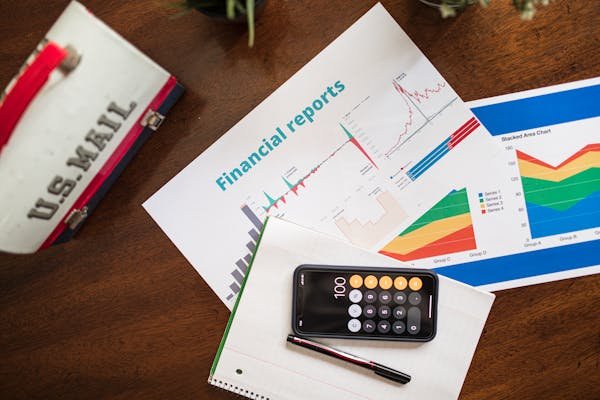
You already have the relationship. The trust is there. The infrastructure is built. The upsell is just a continuation — not a restart.
The Economics of Upselling
Think of it like farming vs. hunting. Acquiring new users is like hunting — unpredictable, resource-heavy, sometimes a hit or miss. Upselling is like farming — steady, controlled, and scalable.
When you invest in upsells:
- Your CAC (customer acquisition cost) stays flat, while revenue grows.
- Your payback period shortens.
- Your margins widen.
That’s what makes upsell revenue not just desirable, but necessary for sustainable growth.
How to Maximize Low-Cost Upsell Revenue
To capitalize on this, shift some of your budget and energy from top-of-funnel to mid- and bottom-of-funnel expansion.
Build a system that includes:
- Behavioral triggers: Use product analytics to know when a user is most ready to upgrade.
- In-app upgrade flows: Make it effortless to move from one tier to the next. Don’t send them to a sales call unless you must.
- Education: Use tooltips, product tours, or onboarding sequences to show the benefits of upgrading.
- Customer feedback: Regularly ask, “What would you pay more for?” That list becomes your roadmap for profitable features.
And don’t forget pricing. Make sure your base plan gives value — but also leaves room for upsells that feel worth it.
When you look at your growth engine, upsell revenue should be a core input — not an afterthought. It’s the cheapest path to more revenue.
16. B2B SaaS with >$10M ARR typically see 40–50% of growth from upsells
What Happens After You Hit $10M ARR
Once a B2B SaaS company crosses the $10 million annual recurring revenue mark, things start to shift. Growth from new customers slows down. Markets start to saturate. Sales becomes more expensive and complex.
At this point, the most efficient way to grow is through expansion — and upsells take center stage.
In fact, for companies past this milestone, nearly half of all growth comes from upselling existing customers.
The Reason Behind the Shift
When your base of customers gets bigger, you unlock more opportunities to grow from within.
- Customers start adding more seats
- They hit usage limits
- They want more features as they mature
- Their internal teams expand and adopt the product across departments
All of these moments are ideal for upsells.
Also, you already paid the acquisition cost. Every dollar of upsell revenue is pure margin compared to new customer revenue, which has heavy sales and marketing costs.
How to Build an Upsell Engine at Scale
At this stage, you need to systematize how upsells happen.
- Customer success must be revenue-aware. They’re no longer just focused on renewals — they’re also expected to drive growth by identifying upsell moments.
- Account segmentation matters. Know which customers are in expansion mode and prioritize them. Assign account managers accordingly.
- Data-driven nudges work better than generic pitches. Use usage data, login frequency, and product milestones to trigger personalized outreach or in-app messages.
- Tiered pricing with clear value gaps. Create distinct steps in your plans. Make the benefits of upgrading obvious and immediate.
- Bundle advanced features. Don’t nickel-and-dime, but also don’t give away premium capabilities too early.
Track expansion revenue as its own KPI. If you’re under 30%, it may mean you’re under-monetizing. Push toward the 40–50% range and beyond.
Remember — at scale, the easiest growth isn’t outside your walls. It’s within the customers you already have.
17. Personalized upsell offers lift conversion rates by 36%
One Size Doesn’t Fit All
If you’re sending the same upgrade message to every customer, you’re leaving money on the table.
Customers are not the same. They use different features. They have different goals. They experience different pain points. And that’s why personalized upsell offers outperform generic ones by over a third.
Why Personalization Matters
People respond to relevance. If an upsell offer feels tailored to their exact situation, they’re far more likely to click, read, and convert.
It also builds trust. Instead of looking like a sales tactic, it feels like a helpful suggestion.
Here’s what personalization can look like:
- Referring to the exact feature they’ve been using
- Showing how the upgrade improves their specific workflow
- Mentioning team size or industry-specific use cases
- Timing the message to a key moment in their product usage
All of this makes the offer feel like it was made for them — because it was.
How to Implement Personalized Upsells
Start with your product data. What are customers doing inside your tool? Use that to build upsell segments.
For example:
- Users who use your reporting tools daily → offer them advanced analytics
- Customers with teams of 10+ → suggest collaboration add-ons
- Those consistently hitting limits → pitch an upgrade with more capacity
Then, use automation tools that let you create dynamic email content or in-app messages. Tailor your messaging by user segment and behavior.
Keep your personalization subtle but powerful. Instead of saying, “We saw you do X,” say “Since you’ve been using [Feature A], you might benefit from [Upgrade B].”
And always make it actionable. Include a clear CTA. Let users upgrade in one click or get more info easily.
Personalized upsells convert more, build more loyalty, and feel less like sales. They simply work.
18. Companies with product-led growth see 28% of MRR expansion come from self-serve add-on purchases
Letting the Product Sell Itself
Product-led growth (PLG) means your product does the talking. Users sign up, use it, get value, and upgrade — all without needing to talk to a sales rep.
And one of the most powerful outcomes of PLG? Users buy more on their own.
In companies using a PLG model, 28% of monthly recurring revenue (MRR) growth comes directly from customers buying add-ons themselves.
Why Self-Serve Upsells Are So Powerful
When users can buy what they want, when they want — without friction — two things happen:
- Conversion rates go up
- Sales costs go down
It’s the ideal combination for scale.
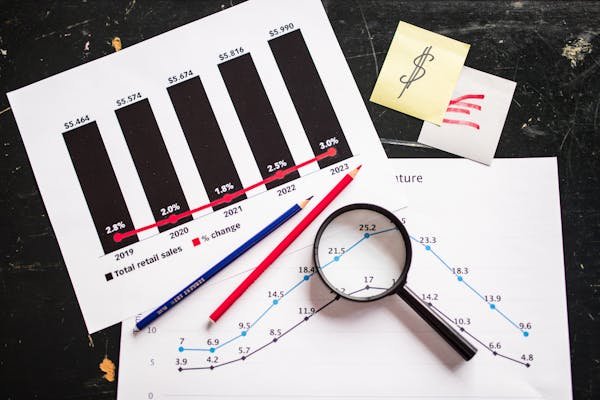
PLG companies design products that naturally lead users toward upgrades. As customers grow, so do their needs. If they can satisfy those needs with just a few clicks, they’ll do it more often — and more quickly.
How to Build Self-Serve Add-On Paths
Here’s how to make this happen:
- Design in-app prompts. Use tooltips, banners, or modal windows to highlight upgrades when they’re relevant — not randomly. If a user clicks a premium feature, show a simple message with upgrade options.
- Allow one-click purchases. Integrate your billing system so users can upgrade without needing approval flows, paperwork, or a call.
- Use usage triggers. When a user nears a limit, show a message: “You’re almost at your cap. Add more storage now.”
- Offer immediate value. Let them use the add-on instantly. No delays, no emails. Value needs to be instant to reinforce the purchase.
- Test placement and timing. Move upgrade CTAs around the UI. Test when and where they convert best.
And lastly, show the benefit, not the cost. Don’t just say “Upgrade for $10/month.” Say, “Upgrade to save 3 hours a week with automation.”
In a PLG world, your product is your best salesperson. Make sure it knows how to sell.
19. Subscription boxes with optional upsells have 25% higher LTV than those without
The Add-On Edge in Physical Subscriptions
Subscription boxes — whether for food, fashion, fitness, or hobbies — have taken off. But not all are built the same. The most profitable ones share a key trait: they include optional upsells.
These boxes, where customers can add products before shipping or unlock premium variations, see a 25% higher lifetime value (LTV) compared to boxes that just deliver the same set of items each cycle.
That’s a huge margin difference — one that can define long-term profitability.
Why This Works So Well
It comes down to choice and engagement. Customers like to feel in control. When you give them the ability to add extras or customize their box, they’re more likely to:
- Stay subscribed longer
- Spend more per cycle
- Interact more with your platform
These moments of engagement aren’t just about money — they’re about deepening the customer relationship.
Optional upsells also let you serve different kinds of customers. Some want only the basics. Others want the full premium experience. Add-ons let you offer both without forcing everyone into one price tier.
How to Add Upsells to a Subscription Box
You don’t need to overhaul your whole model. Start small.
- Offer pre-shipment add-ons. Before the box ships, send an email or app notification saying: “Want to add something special this month?”
- Create themed upgrades. For seasonal boxes, offer limited-edition items customers can opt into.
- Bundle extras. Offer “deluxe” versions of the monthly box with an extra item or higher quality materials.
- Surprise-and-delight logic. Occasionally offer upsells based on browsing history or past behavior: “Since you loved last month’s tea, want to try our premium blend?”
Keep it optional. Keep it simple. Don’t overwhelm users — just give them a quick “yes” button.
Over time, track which upsells perform best. Use that data to improve offers and pricing.
If you’re in the physical product space, remember this: a subscription without upsells is leaving serious LTV on the table.
20. Pricing models that bundle add-ons increase upsell take-rates by 22%
Why Bundles Make Buying Easier
Customers love simplicity. They don’t want to think too hard. When pricing is complex, or when too many options are presented at once, it creates friction — and friction kills conversion.
That’s why bundling add-ons into value-based packages can increase your upsell conversion rate by over 20%.
Instead of asking customers to pick and choose from a long list of extras, bundles let them opt into one clear offer that feels complete.
The Psychology Behind It
Bundles frame add-ons as part of a bigger, valuable whole. It feels like a deal. Customers think they’re getting more for less — even if the total cost is higher.
It also reduces the number of decisions they have to make. Instead of choosing five add-ons, they just choose one “Pro” or “Plus” package. That lowers decision fatigue and increases action.
And it plays into tiered psychology. Most users pick the “middle” option. By smartly bundling features in that tier, you can increase revenue without heavy pressure.
How to Bundle for Better Take-Rates
- Group related add-ons. Don’t mix and match random features. Bundle based on workflows. For example, a “Productivity Pack” might include automation, analytics, and integrations.
- Create three clear tiers. Make each step feel meaningfully better than the last. But don’t overwhelm with five or more.
- Show value, not features. Instead of saying “Includes Feature X,” say “Save 5 hours/week with automation tools.”
- Price it as a deal. The bundle should feel cheaper than buying everything individually — even if most people wouldn’t have bought them all.
- Label your tiers smartly. “Basic / Professional / Growth” often works better than “Silver / Gold / Platinum.”
You don’t need to force bundles on users. Just make them obvious, valuable, and friction-free.
Over time, you’ll notice take-rates rise — not because you pushed harder, but because you made the decision easier.
21. Freemium SaaS models convert 12–20% of users via upsells to paid features or add-ons
The Freemium Funnel’s Secret Weapon
Freemium models can be risky. You give away a lot, hoping enough users will convert to paying plans to make it worthwhile. But here’s what makes them work: smart, timely upsells.
The most successful freemium SaaS businesses convert between 12% and 20% of their free users into paid users — not by nagging, but by showing value and offering targeted add-ons.
These users aren’t forced to upgrade. They choose to — because the upsell makes sense.
Why Upsells Are the Conversion Trigger
Free users often engage with your product out of curiosity. As they use it more, they hit roadblocks — limited features, usage caps, missing functionality.
These friction points, if framed right, are perfect upsell opportunities.
What makes the difference is timing. If you show a paid option too early, users churn. If you wait too long, they may never convert.
The sweet spot is when the user has seen success — and now wants more.
How to Optimize Your Freemium Upsell Path
- Set clear upgrade triggers. Don’t show upsells on day one. Wait until users complete key actions — like creating a project, inviting teammates, or hitting a usage threshold.
- Use soft walls. Let users preview paid features before locking them behind a paywall. Let them see what they’re missing — that increases desire.
- Personalize messaging. A user who’s sent 500 emails will respond to a different upsell than someone who’s invited 10 collaborators.
- Keep the core free valuable. Don’t make your product feel broken. Upsells should enhance value, not replace it.
- Offer monthly and annual paths. Let users choose the payment model that fits their comfort level.
Track your free-to-paid conversion rate over time. If it’s under 5%, your free product may not show enough value. If it’s over 25%, you might be giving too much away without charging.
The goal is balance: give value for free, and offer more value for a fee. Done right, freemium becomes a growth machine — not a giveaway.
22. 34% of SaaS companies offer usage-based add-ons as a primary upsell driver
Usage-Based Pricing: The Add-On That Scales With the Customer
Usage-based pricing isn’t just a trend — it’s becoming a core strategy for SaaS companies to drive recurring revenue. In fact, over a third of SaaS companies now offer usage-based add-ons as a main way to upsell.
Why? Because it aligns payment with value. The more the customer uses the product, the more they pay — and they’re okay with that, because it’s tied directly to their output or results.
Why Usage-Based Add-Ons Convert
These types of add-ons don’t feel like a cost increase — they feel like growth. If a customer’s team is sending more emails, processing more data, or analyzing more reports, usage-based add-ons scale naturally.
Customers also appreciate the flexibility. They can start small, and the product grows with them.
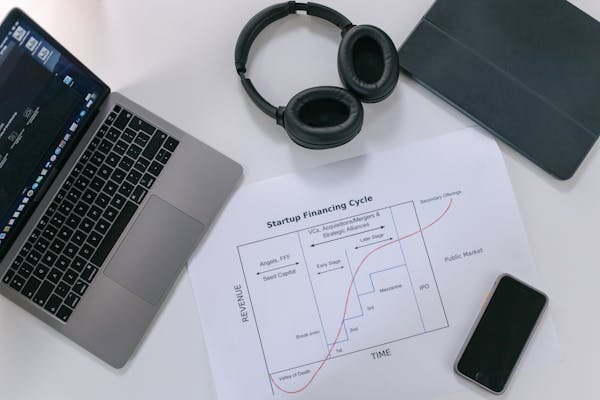
This model works especially well for:
- API access or call volume
- Email or SMS sends
- Storage or bandwidth
- User seats or sessions
- Reporting runs or exports
It creates predictable, steady expansion revenue — without a big sales effort.
How to Implement Usage-Based Add-Ons the Right Way
Start by identifying the core metric that reflects usage in your product. This should be tied to customer outcomes. Don’t just charge for logins — charge for actions that reflect real value.
Then:
- Set clear usage tiers. Let users see where they stand. “You’ve used 80% of your plan” nudges work well.
- Make overage seamless. If they go over their usage, don’t block access. Auto-upgrade or allow one-click extensions.
- Offer usage tracking dashboards. Help users stay in control. Transparency reduces billing frustration.
- Bundle usage with fixed plans. For example: “$99/month for 1,000 sends, then $0.01 per send beyond that.”
- Use usage alerts to drive upsells. When users approach their limits, trigger helpful upgrade suggestions.
Usage-based add-ons are powerful because they grow with your customer — and when your customer wins, you win.
23. 67% of customer success leaders prioritize upselling over net new acquisition
The Shift in Strategy
Traditionally, sales teams chased new logos while customer success teams handled retention. But that’s changing. Today, two-thirds of customer success leaders say upselling is a bigger priority than getting new customers.
Why? Because expanding revenue from your existing customer base is faster, cheaper, and often more predictable.
And customer success teams are perfectly positioned to make it happen.
Why CS Teams Are the Best for Upsells
Customer success professionals build relationships. They’re already talking to users about goals, challenges, and workflows.
When a customer hits a limit or starts expanding usage, CS is the first to know.
With the right tools and mindset, they can suggest upgrades that:
- Solve problems
- Unlock new capabilities
- Drive better results
And since they’re not quota-carrying salespeople, the conversation feels more genuine — which makes customers more likely to say yes.
How to Make Upselling a CS Priority
- Set upsell targets. Don’t rely on instinct. Give your CS team clear goals for expansion revenue, and track performance over time.
- Train on discovery. Teach CS reps to ask questions that uncover expansion opportunities: “Are more teams using the product?” or “Are you running into any workflow limits?”
- Create upgrade playbooks. Give reps step-by-step guidance on how and when to suggest certain add-ons or higher tiers.
- Reward upsell wins. Incentivize successful upsells with bonuses or team recognition. Make it a point of pride.
- Integrate data into CS dashboards. Give reps visibility into usage patterns so they can proactively spot upsell moments.
Upselling through customer success isn’t about pushing features. It’s about offering the right solution at the right time — and helping customers grow with your product.
24. Retention rates are 15% higher among customers who purchase at least one add-on
Add-Ons Create Stickier Relationships
If you’re trying to fight churn, here’s one of the simplest tactics: get more customers to buy an add-on.
Customers who purchase even one small add-on are 15% more likely to stick around than those who never upgrade beyond the base plan.
Why does this happen? Because add-ons deepen commitment. They create a sense of ownership and unlock more value from the product.
Once customers invest more — even just a little — they become more engaged, more satisfied, and more loyal.
Why This Works
When someone pays for an add-on, they’re saying: “I want to do more with this tool.” That usually means:
- They’re more active
- They’re embedding the product into more workflows
- They’re seeing more value over time
This engagement creates habit — and habit leads to retention.
Plus, if a customer has multiple features or modules enabled, switching becomes harder. It’s not just about price anymore — it’s about the effort to replace what they’ve built.
How to Use Add-Ons to Boost Retention
- Promote small upgrades early. Get users to cross that first threshold. Even a $5/month add-on creates deeper investment.
- Highlight ROI, not features. Don’t say, “Add analytics.” Say, “Make smarter decisions with visual reports.”
- Tie add-ons to success outcomes. Help customers see how the upgrade drives results: faster work, better visibility, reduced costs.
- Monitor add-on usage. Make sure users engage with what they’ve paid for. If not, guide them. Underused add-ons can actually increase churn risk.
- Celebrate upgrades. When a user buys an add-on, send a confirmation that says, “Smart move. You just unlocked X.”
Make the moment feel valuable — because it is.
Churn isn’t just about product quality. It’s about product relationship. Add-ons deepen that bond.
25. Email-based upsell campaigns have a 9.5% average conversion rate
Email Isn’t Dead — It’s a Revenue Driver
With so much focus on in-app prompts and automated flows, it’s easy to forget that good old email still works — and it works surprisingly well.
When done right, email-based upsell campaigns convert nearly 1 in 10 recipients. That’s a strong number, especially when you consider how low-cost and scalable email outreach is.
Whether it’s a one-time product announcement or a lifecycle sequence based on user behavior, email gives you a personal channel to explain value — without being pushy.
Why Email Works for Upsells
Email gives you space to tell a story. You can:
- Explain the value of an upgrade in detail
- Include testimonials or case studies
- Address common objections
- Add direct CTAs that bring the user back into the product
It also shows up where your user is already active — their inbox. Unlike in-app prompts, which need the user to log in, email reaches them even when they’re not using your product.
And if your message is timely and targeted, conversion follows.
How to Create Upsell Emails That Convert
- Trigger emails based on behavior. Did someone reach their usage cap? Browse your pricing page? Use a feature that connects to a paid module? Perfect time to send an upsell email.
- Keep it short, but clear. Explain what they’ll gain by upgrading — in one or two sentences. Don’t overload with features.
- Use a single CTA. “Upgrade Now” or “See What’s Included” works better than offering too many choices.
- Add social proof. A line like “Over 1,000 teams already use this upgrade” can ease hesitation.
- Follow up. If they don’t open the first email, try again with a different subject line or value hook. Don’t just send once and forget.
Track open rates, click-throughs, and upgrades. Over time, you’ll build a sequence that pays for itself — again and again.
26. Add-on upsells via in-app messages see a 17% click-to-convert rate
In-App Messaging: Where Intent Meets Action
While email is a great external channel, in-app messaging is your real-time upsell tool. You’re reaching users while they’re actively using your product — and that means they’re ready to take action.
No wonder in-app upsell messages convert at an impressive 17% rate from click to purchase.
That’s almost 1 in 5 users who click, ending up paying.
Why This Channel Is So Effective
In-app prompts are contextual. They’re based on what the user is doing right now. If someone hits a feature wall, sees a usage cap, or opens a paid tool, that’s the moment of highest intent.

You’re not interrupting — you’re helping.
And because everything happens inside the product, there’s no friction. The upgrade is just a few clicks away.
How to Maximize In-App Upsell Performance
- Use smart timing. Don’t show upsells when users first log in. Wait until they engage with specific actions that suggest they’re ready to upgrade.
- Match message to moment. If they’re using your analytics feature, prompt them to unlock advanced reporting. Don’t pitch unrelated add-ons.
- Keep design clean. A short message with a strong CTA works better than a full-page modal. Use buttons like “See Pricing” or “Try Premium.”
- Limit frequency. Don’t overwhelm users with too many prompts. One upsell nudge per session is usually enough.
- Test formats. Slideouts, banners, tooltips — try different approaches and track what drives clicks and conversions.
Think of in-app messages as your “active” sales team — always present, always helpful, and always there at the exact right time.
27. Self-service portals with upsell options see 2x higher expansion revenue per user
Let Users Upgrade Themselves — and Watch Revenue Grow
Today’s customers don’t want to talk to sales. They want control. They want convenience. They want to upgrade, downgrade, or cancel on their own terms.
That’s why self-service portals with upsell options drive twice the expansion revenue per user compared to systems that rely only on human interaction.
It’s not just about saving support time — it’s about unlocking revenue you wouldn’t get otherwise.
Why Self-Service Wins
Users don’t always want to email support or call an account manager just to make a small upgrade. If that’s their only option, many won’t bother.
But when they can upgrade inside their account — at 2 a.m., in 2 minutes, without a conversation — they’re far more likely to do it.
It’s not just easier. It’s empowering. That’s what makes it profitable.
How to Build a Portal That Drives Upsells
- Add clear upgrade paths. Inside the account section, include buttons like “Add Users,” “Upgrade Plan,” or “Get More Features.” Don’t bury them in settings.
- Show current usage. A dashboard that says “You’ve used 95% of your storage” is the perfect upsell moment.
- Offer flexible options. Monthly or annual? Seat-based or usage-based? Let users choose what works for them.
- Use microcopy to nudge action. “Upgrade to unlock full team access” is more effective than just “Upgrade.”
- Make pricing visible. Don’t hide costs behind contact forms. Transparency builds trust — and speeds decisions.
When you combine autonomy with clarity, users take action on their own — and they spend more doing it.
28. Onboarding flows that include upsell nudges yield 13% higher ARPU
First Impressions Matter — Especially for Revenue
Onboarding is your first real chance to shape how a customer uses your product. It sets the tone. It builds habits. And — if you do it right — it drives revenue from day one.
Data shows that when upsell nudges are baked into the onboarding flow, average revenue per user (ARPU) increases by 13%.
That’s not about pushing. It’s about showing value early — and setting the stage for customers to buy more as they grow.
Why Onboarding Upsells Work
At the beginning, users are highly engaged. They’re curious. They’re setting things up. They’re open to guidance.
If you wait too long to introduce upsell opportunities, you risk losing momentum. But if you show relevant premium features at just the right moment, you plant the seed of future upgrades.
Early exposure to value creates long-term revenue.
How to Introduce Upsells During Onboarding
- Use guided tours. Show users both free and premium features — but clearly label what’s included in their current plan.
- Allow premium trials. Let new users try paid features during the first 7–14 days. At the end, show what they’ll lose — and how to keep it.
- Highlight power-user outcomes. “Unlock automation to save 5+ hours a week” is a great nudge that also teaches value.
- Don’t overwhelm. Focus on one upsell at a time. Keep messaging light, visual, and context-based.
- Track activation points. See which features lead to higher ARPU, and find ways to expose those features earlier.
When you build your onboarding flow with both success and expansion in mind, you create a better experience — and a more profitable one.
29. Customers who purchase add-ons within the first 30 days are 3x more likely to renew
Early Add-On Buyers Are Long-Term Loyalists
Renewal is the true test of subscription success. If people don’t stick around, nothing else matters.
That’s why this stat is so powerful: users who buy an add-on in the first 30 days are three times more likely to renew than those who don’t.
It tells us something important — when users engage deeper early on, they commit more over time.
Why Early Add-Ons Drive Retention
Purchasing an add-on early in the journey signals:
- Higher intent
- More product engagement
- Faster value realization
- Stronger belief in the product’s potential
These customers are already convinced. They’ve invested time and money — and they’re more likely to stick around and grow.
Early upgrades also usually mean the customer is aligning your product with a real need. That integration into their workflow makes them less likely to churn later.
How to Encourage Add-Ons in the First Month
- Use onboarding upsells. As covered in the last section, this is the prime moment to introduce upgrades that solve immediate problems.
- Offer time-sensitive trials. Let users try premium features for free in the first 30 days. At the end, prompt them to keep what they love.
- Trigger add-on offers based on milestones. If a user completes setup, hits a usage limit, or connects a third-party tool — show an upgrade path that enhances that experience.
- Send follow-up emails. Around day 15–20, highlight one specific add-on and explain its benefits clearly. Make it feel like a natural next step.
- Track cohort performance. See how early add-on adopters behave over time. Use those patterns to shape future campaigns.
Early commitment leads to long-term value. When you help users deepen their investment in month one, you set the stage for retention and growth.
30. SaaS companies with >100% net revenue retention almost always attribute it to effective upsell strategies
The Ultimate Goal: Net Revenue Retention Above 100%
If you’re in SaaS, few metrics matter more than Net Revenue Retention (NRR). It measures how much revenue you retain from your existing customers — including upgrades, downgrades, and churn.
And here’s the kicker: companies that consistently hit 100%+ NRR almost always point to one thing — upselling.
When your expansion revenue offsets churn and even grows beyond it, you’re building a business that scales predictably and profitably.
Why Upsells Drive Healthy NRR
NRR above 100% means your customer base is growing even if you don’t add new users. You’re doing more with what you already have — and that’s the foundation of SaaS excellence.
Effective upsell strategies give users more ways to grow with you:
- Add-ons
- Higher tiers
- Usage-based pricing
- Feature expansions
Each of these deepens engagement and increases monthly revenue.
Even if a few customers leave, the ones who stay are paying more — keeping your overall revenue climbing.

How to Build Toward 100%+ NRR
- Segment customers by potential. Not all customers will grow. Focus your efforts on those who can.
- Track expansion-ready signals. Usage spikes, feature requests, team growth — these are signs it’s time to upsell.
- Create a roadmap of add-ons. Don’t stop at one upsell. Build a path that continues to unlock more value over time.
- Align teams around expansion. CS, product, marketing, and sales should all know how to spot, support, and suggest upsells.
- Measure and iterate. NRR should be a dashboard metric. If it drops, look at where upsells are missing. If it rises, double down.
The best SaaS companies aren’t just acquiring new customers. They’re growing revenue inside their base — and upsells are how they do it.
If you want your business to thrive long-term, build a strategy that drives expansion first.
Conclusion
Add-ons and upsells aren’t just a nice bonus — they’re a core driver of growth, profitability, and retention in subscription businesses. Whether you’re in SaaS, e-learning, mobile apps, or subscription boxes, the message is clear:














